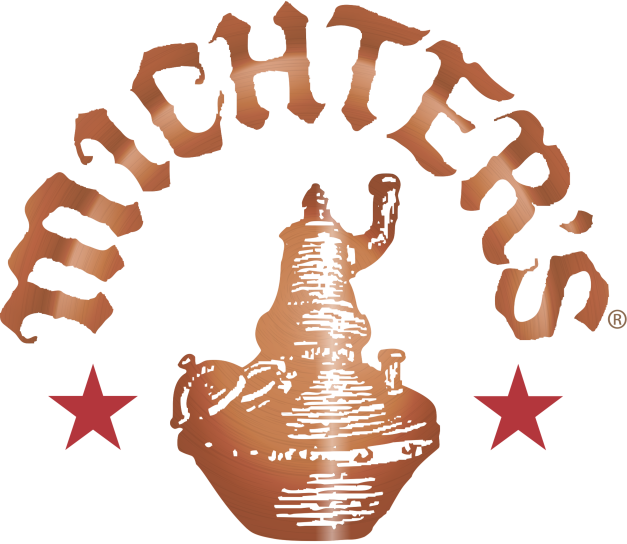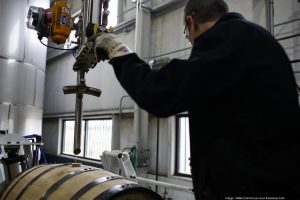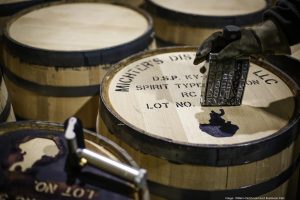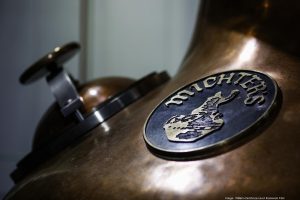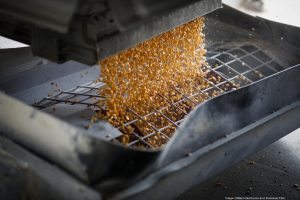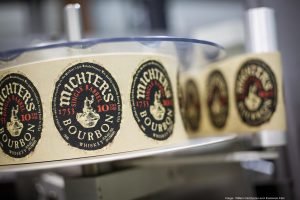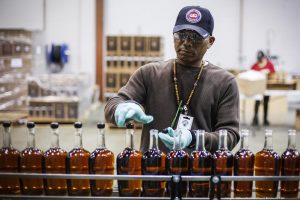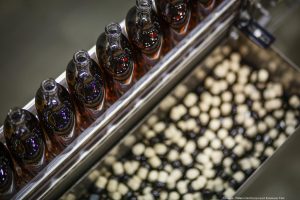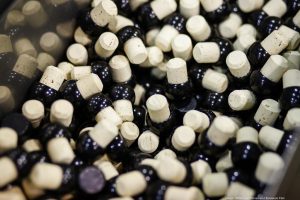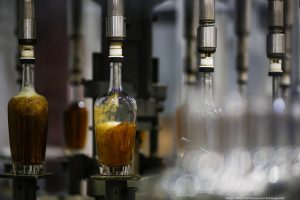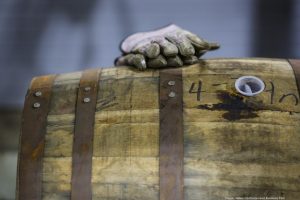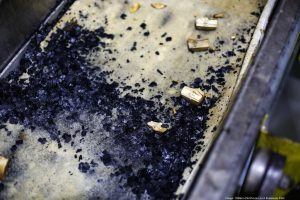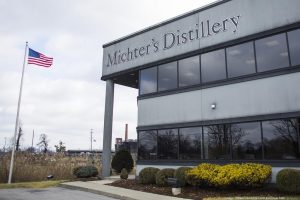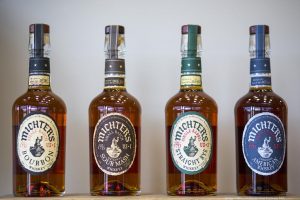There are a lot more bourbon brands out there than there are bourbon distilleries.
That’s because many brands buy bourbon and whiskey produced by other distillers and age and blend it to get the desired flavor.
Now it seems we’re turning a corner.
Smaller brands built on bourbon that has been cooked elsewhere are starting to bring their own distilleries on line. One of the first in this regard is Michter’s Distillery LLC, which photographer William DeShazer and I recently toured. You can find his photos in the attached slideshow.
This facility, located on New Millennium Drive, close to Wathen Lane in Shively, began operating in August. The 65,000-square-foot building previously was used as a manufacturing plant for Caldwell Industries Inc. Michter’s now employs about 16 workers there.
Walking through
General manager Andrea Wilson and distiller Pamela Heilmann gave us a look at the entire bourbon-making process. We watched as a grain truck, carrying corn, was unloaded at the mill in the rear of the plant. They also gave a look at the distillery’s laboratory, where the grains are tested prior to unloading. The company has two or three grain trucks pull in per week to unload.
The grain is used to cook mash, which is fermented in four 8,000-gallon tanks inside the facility. The fermentation process takes three to five days — and it’s tested throughout that time to determine its readiness. After fermentation, the resulting “distiller beer” is distilled using a 46-foot high, 100 percent copper still in an adjoining room.
In October 2014 we watched Louisville-based Vendome Copper & Brass Works Inc. install this still. (See the article and slideshow here.)
After the Michter’s bourbon is distilled, it’s placed into barrels for aging at about 103 proof. Heilmann told me that many distillers put the whiskey in the barrel at 125 proof.
By aging it at 103 proof, less water has to be added to the bourbon to get it to a bottling proof of 91.4. That makes the process more expensive, Heilmann said, but it affects the taste. I noticed at a tasting that the product bottled at 103 had a softer flavor, with much less burn going down than a bourbon barreled at 125 proof.
The bourbon is put into barrels using machinery from Louisville-based Bohnert Equipment Co. Inc. It takes one minute and 24 seconds for workers to fill a barrel. After they’re filled, barrels are marked with a date and stored at a facility onsite.
Heilman told me Michter’s doesn’t have a defined aging time; it’s aged until master distiller Willie Pratt says it tastes ready for bottling.
The facility has been producing spirits only since August, so none of the product made there is ready for bottling yet. By definition, bourbon has to be aged two years — and if it’s aged less than four, it has to be labeled as such.
But Michter’s has begun bottling bourbon made at another, undisclosed distillery.
While we were at the Shively distillery, bottles of Michter’s 10-year-old bourbon were filled for a release later in March. (Some of this bourbon might have been aged longer than 10 years, Heilman told me. Again, it depends on when Pratt believes it’s ready.)
Michter’s revival
The Shively facility is a production plant, not a place that tourists and Michter’s fans can go for a first-hand look at the distilling process.
Michter’s has been working on building a visitors center at the Fort Nelson Building, near the corner of 8th and Main streets in downtown Louisville, since 2011. That plan is still in the works, but president Joseph Magliocco declined to estimate when it will be done. He joked that it will be sometime in 2013.
All this is aimed at reviving a very old name in whiskey.
Michter’s was founded in Pennsylvania in 1753. There’s an old legend that George Washington purchased Michter’s to share with troops at Valley Forge during the Revolutionary War.
It made a comeback after Prohibition, but production of Michter’s stopped in 1989.
Magliocco and a partner, the late Richard Newman, former president and CEO of Wild Turkey distiller Austin Nichols Co., teamed up to resurrect the brand in the 1990s.
Good for Kentucky
Having a distillery such as this come online is important for Kentucky’s distilling industry, said Eric Gregory, president of the Kentucky Distillers’ Association. Even though the state often is associated with the distilling industry, it has fewer whiskey production facilities than several other states, including New York, Colorado and Texas.
So having Michter’s and others — Peerless Distillery opened last year, and Angel’s Envy distillery is getting close as well — come online bodes well for the state’s industry, he said.
The Kentucky Distillers’ Association has 27 members today, and that’s the most the organization has had since Prohibition, Gregory said. Another 18 distillers have applied to join the organization.
“We say it’s the golden age of bourbon, and this is further proof,” Gregory said. “That’s a fantastic facility. And it’s got room to grow.”
